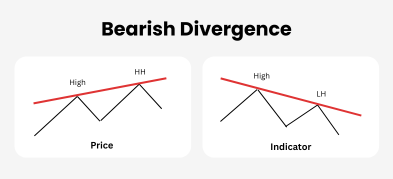Important Information
This website is managed by Ultima Markets’ international entities, and it’s important to emphasise that they are not subject to regulation by the FCA in the UK. Therefore, you must understand that you will not have the FCA’s protection when investing through this website – for example:
- You will not be guaranteed Negative Balance Protection
- You will not be protected by FCA’s leverage restrictions
- You will not have the right to settle disputes via the Financial Ombudsman Service (FOS)
- You will not be protected by Financial Services Compensation Scheme (FSCS)
- Any monies deposited will not be afforded the protection required under the FCA Client Assets Sourcebook. The level of protection for your funds will be determined by the regulations of the relevant local regulator.
Note: Ultima Markets is currently developing a dedicated website for UK clients and expects to onboard UK clients under FCA regulations in 2026.
If you would like to proceed and visit this website, you acknowledge and confirm the following:
- 1.The website is owned by Ultima Markets’ international entities and not by Ultima Markets UK Ltd, which is regulated by the FCA.
- 2.Ultima Markets Limited, or any of the Ultima Markets international entities, are neither based in the UK nor licensed by the FCA.
- 3.You are accessing the website at your own initiative and have not been solicited by Ultima Markets Limited in any way.
- 4.Investing through this website does not grant you the protections provided by the FCA.
- 5.Should you choose to invest through this website or with any of the international Ultima Markets entities, you will be subject to the rules and regulations of the relevant international regulatory authorities, not the FCA.
Ultima Markets wants to make it clear that we are duly licensed and authorised to offer the services and financial derivative products listed on our website. Individuals accessing this website and registering a trading account do so entirely of their own volition and without prior solicitation.
By confirming your decision to proceed with entering the website, you hereby affirm that this decision was solely initiated by you, and no solicitation has been made by any Ultima Markets entity.
I confirm my intention to proceed and enter this websiteCheap Stocks to Buy Now Under $10, $5, S1
Looking to enter the stock market without spending a fortune? Many investors are searching for cheap stocks to buy now under $10 that offer strong potential. These low-cost stocks let you start small while aiming for big returns if chosen with care.
Cheap Stocks to Buy Now Under $10
All companies listed below are trading under $10 as of July 2025.
| Stock | Approx. Price | Sector | Highlights |
| Plug Power | ~$6.50 | Green Energy | Hydrogen tech, high volatility but long-term trend play |
| Sirius XM (SIRI) | ~$4.80 | Media & Streaming | Consistent cash flow and steady subscriber base |
| Ambev (ABEV) | ~$2.90 | Consumer Goods | Strong emerging market presence and brand power |
| Pitney Bowes (PBI) | ~$3.20 | Logistics | Turnaround in progress, still a legacy delivery name |
| Genworth Financial (GNW) | ~$5.10 | Insurance & Finance | Undervalued book value, improving financials |
Cheap Stocks to Buy Now Under $5
Looking for lower entry points? These are legitimate stocks under $5, currently trading on major exchanges.
| Stock | Approx. Price | Sector |
| Zomedica (ZOM) | ~$0.75 | Veterinary Health |
| Ardelyx Inc. (ARDX) | ~$4.60 | Biotech |
| Hut 8 Corp (HUT) | ~$4.20 | Crypto Mining |
| Kosmos Energy (KOS) | ~$3.95 | Oil & Gas |
| Nokia (NOK) | ~$4.85 | Telecommunications |
Cheap Stocks to Buy Now Under $1 Dollar
These are ultra-low-priced stocks (penny stocks), still actively traded but highly speculative.
| Stock | Approx. Price | Exchange |
| BitNile Metaverse (BNMV) | ~$0.09 | NYSE American |
| ToughBuilt Industries (TBLT) | ~$0.28 | NASDAQ |
| ToughBuilt Industries (TBLT) | ~$0.65 | NASDAQ |

Why Focus on Cheap Stocks?
Cheap stocks particularly those under $10, $5, or even $1 attract a wide range of investors. But why do people focus on them, and who are they really for?
Accessible for Beginners
Cheap stocks are especially appealing to beginner traders because they:
- Require less capital – You can start with just $100–$500 and still build a diversified mini-portfolio.
- Encourage learning by doing – New traders can test strategies like dollar-cost averaging, breakout trading, or technical analysis in real-time without risking large amounts.
- Offer psychological comfort – Holding 100 shares of a $1 stock feels more substantial than holding 1 share of a $100 stock—even if the value is the same.
However, beginners must avoid assuming low price equals low risk. Cheap doesn’t mean safe.
Opportunity for High Percentage Gains
Whether you’re a beginner or pro, the math of small stocks is compelling:
- A $2 stock moving to $3 = +50%
- A $0.50 stock doubling = +100%
These kinds of percentage moves are more common in cheap, volatile stocks than in blue-chip giants like Apple or Microsoft.
Experienced traders often target cheap stocks for short-term trades, swing positions, or small-cap growth plays that may explode with positive news or earnings.
More Trading Flexibility
Cheap stocks let all investors regardless of experience- enjoy:
- Scalable positions – You can size in or out easily based on your risk tolerance.
- Liquidity in numbers – Owning 500–1,000 shares gives flexibility for partial exits as price moves.
- More setups to trade – With thousands of cheap stocks available, traders can rotate among sectors, trends, and patterns.
Hidden Gems in Undervalued Markets
Some low-priced stocks are genuinely undervalued, especially after broad sell-offs or industry downturns. Sectors like biotech, clean energy, or emerging tech often have companies with:
- Strong products in development
- Healthy balance sheets
- Temporary price pressure due to macro events
Smart traders seek out these “value buys” before the market re-rates them.
Ideal for Speculation with Managed Risk
For experienced traders, cheap stocks are often used for:
- Event-driven trades – Earnings beats, FDA approvals, mergers
- Momentum plays – Riding volume spikes and breakout patterns
- High-risk/high-reward opportunities – With stop-losses in place, the upside can outweigh the downside
That said, these are not suitable for retirement portfolios or long-term passive investing unless the company has stable fundamentals.
What to Consider When Buying Cheap Stocks
Buying cheap stocks to buy now under $10, $5, or $1 might sound like a bargain but low price doesn’t always mean good value. Many of these stocks are volatile, underfollowed, or even speculative. So before you invest, here’s what you must consider:
Fundamental Analysis Still Matters
Even if the stock is cheap, ask: Is the business fundamentally sound? Look at:
- Revenue Growth – Are sales increasing year-over-year?
- Profitability – Does the company earn a profit or burn cash?
- Debt Levels – High debt can increase bankruptcy risk, especially in small-cap firms.
- Cash Reserves – Does the company have enough runway to survive downturns?
- Product or Service – Is there long-term market demand or is the company chasing hype?
Don’t buy just because it’s “cheap” buy because it’s undervalued.
Price Alone Isn’t Value
Many beginner investors confuse a low share price with a good deal. But a $1 stock can still be overvalued if:
- The company has no revenue
- It dilutes shares frequently
- Its market cap is tiny and unsustainable
Always compare price to intrinsic value. Use metrics like:
- P/E (Price-to-Earnings Ratio)
- P/S (Price-to-Sales Ratio)
- Book value per share
Trading Volume and Liquidity
Low-priced stocks often suffer from low liquidity. Ask:
- Can you buy or sell easily without moving the price too much?
- Is there sufficient average daily volume (e.g., at least 1 million shares)?
- Are the bid/ask spreads tight, or is it costly to enter/exit?
Illiquid stocks are more prone to pump-and-dump schemes and price manipulation.
Volatility and Risk Management
Cheap stocks especially under $1, can swing 30–50% in a single day. Ask yourself:
- Can I handle large percentage drawdowns?
- Have I set a stop-loss or risk limit?
- Am I prepared for sudden delisting or reverse splits?
Risk no more than 1–2% of your portfolio per trade, especially with microcaps.
Check the Market Sentiment and News
Even if a stock is fundamentally weak, it may move on news, rumors, or social sentiment. Be cautious:
- Use tools like Google News, Twitter (X), or Reddit (r/pennystocks) to check recent buzz
- Validate if the news is legitimate (e.g., SEC filings, earnings reports)
- Be careful with over-hyped stocks with no real development
Tips for Trading Cheap Stocks
Cheap stocks offer exciting upside but also come with high risk, sudden volatility, and low institutional coverage. To succeed, you need a clear trading plan.
Here are advanced techniques and practical tips to trade cheap stocks smartly and safely:
Always Use Stop Losses — No Exceptions
Cheap stocks can drop 20–50% in hours. Whether you’re swing trading or day trading:
- Set a hard stop-loss (e.g., 10–20% below entry)
- Or use trailing stops to lock in profits as price moves up
- Never “average down” in a losing trade—cut losses fast
Avoid Overtrading and FOMO
Cheap stocks often trigger emotional decisions because of their fast moves. Avoid:
- Jumping into every breakout or news pump
- Taking revenge trades after losses
- Overloading your screen with penny stock tickers
Do Real Research—Not Just Social Media Hype
Many cheap stocks are targets of pump-and-dump schemes. Always validate:
- SEC Filings (10-K, 8-K) for real business updates
- Earnings results and forward guidance
- Short interest levels — high short interest can drive squeezes
Diversify Across Positions and Sectors
It’s tempting to go all-in on “the next 10x penny stock.” But that’s not smart.
- Spread risk across 3–5 trades
- Mix industries (e.g., biotech, energy, small tech)
- Size your positions properly (e.g., risk only 2–5% of capital per trade)
Diversification won’t guarantee profits, but it protects against one catastrophic loser.
Conclusion
Cheap stocks to buy now under $10 are a great starting point for budget-conscious investors. They offer the possibility of strong gains but require caution, research, and risk management. Don’t buy based on price alone. Use data, trends, and fundamentals to guide your trades.
Disclaimer: This content is provided for informational purposes only and does not constitute, and should not be construed as, financial, investment, or other professional advice. No statement or opinion contained here in should be considered a recommendation by Ultima Markets or the author regarding any specific investment product, strategy, or transaction. Readers are advised not to rely solely on this material when making investment decisions and should seek independent advice where appropriate.












